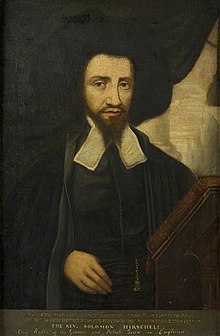Here is an instructive pair of letters to the American Hebrew which, I believe, give an idea about Michael Levi Rodkinson's English limitations. What had happened was a rabbi named J. Mayer Asher had lectured before a group called the Council of Jewish Women, on a topic he called The Ethics of Judaism. The lecture appears to have been a typical contrasting of Greek and Hebrew morals. Asher asserted that ethics are Greek, morals are Jewish, and the distinction is blah blah. He raised a Kantian idea regarding the relation of the moral to the physical; the inner and the outer world, i.e., nature, which is ruled by causality. A certain book had tried to understand how the fixed world outside of us can be changed to conform to moral law. But this, said Asher, was an idea that is alien to Judaism. Besides, he said, there is "no pure Hebrew word that means Nature. Nature is a purely Hellenic concept," reported the American Hebrew. The Jewish idea is that God rules the outer as well as the inner world, Nature is ruled by Him.
On this, Rodkinson pounced. Of course there is a Hebrew word for nature - teva. Now, Rodkinson probably realized that this was a medieval coinage, but he could point to its precursors, the tet-bet-ayin root, that mean "nature." The trouble is, in each instance Rodkinson explained the term "nature" in the sense of "the character of something" rather than "the collective phenomena of the physical world," which is plainly how Asher intended it. It is quite instructive to read how, in each instance, Rodkinson imaginatively explains Hebrew words derived from the root tet-bet-ayin to conform to the meaning "the character of something." For example, he explains the word matbea, coin, to have come from the meaning "the nature of this coin is, that it contains so and so many lesser coins." And so on.
It is perhaps true, of course, that the same relationship between nature in its various meanings of "the characteristic of" and its eventual secondary meaning as "the collective physical phenomena" (see here), was paralleled in Hebrew, where the root tet-bet-ayin came to produce the word for physical phenomena, his explanation of each of these terms as meaning "the characteristic of" is fanciful. And the American Hebrew responds as such, claiming that he misunderstood Asher's use of the word.
In the meantime, another rabbi responded and pointed out that there is a Hebrew word for nature - but that was hardly in dispute, as Asher was certainly aware of the medieval coinage (pun intended). However, the American Hebrew appends a note explaining that it received another letter from Rodkinson, where he denies that he misunderstood Asher. See for yourself - I think he did misunderstand Asher, and his explanation is weak, but you may disagree.
It appears to me that while his level of English - at least as of 1901 - wasn't quite as bad as people made it seem, he certainly was not fluent. What we see here, is that he did not grasp the multiple meanings of the word "nature." While he was aware that "nature" means the character of something, he mistook its meaning in article about the use of the term in the sense of the physical world.
American Hebrew May 3, 1901:
American Hebrew May 18, 1901:


















































